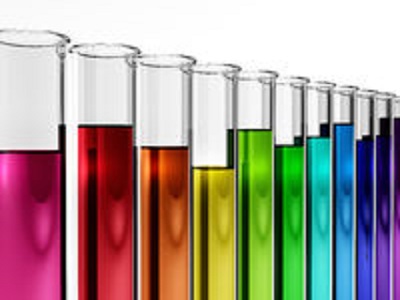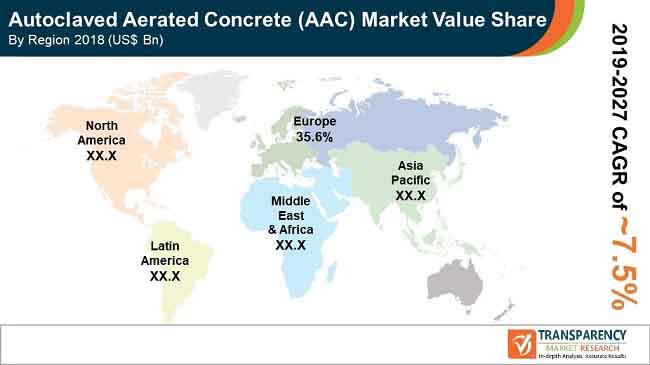
Autoclaved Aerated Concrete Market – Snapshot
Autoclaved aerated concrete (AAC), also known as autoclaved cellular concrete (ACC) or autoclaved lightweight concrete (ALC), is an eco-friendly green building material. The raw material used for the production of AAC is fly ash, which is a leftover product of thermal power plants. AAC has various advantages over other building materials. The product offers a unique combination of low weight, rigidity of construction, durability, and cost-effectiveness. AAC facilitates speedy construction.
Request PDF Brochure :https://www.transparencymarketresearch.com/sample/sample.php?flag=B&rep_id=12650
The product offers thermal and acoustic insulation, providing better safety and lower energy cost of heating or cooling. Although AAC has been in existence since 1923, it is only now that the product has started gaining popularity as a sustainable green building material. The product has been extensively used in Europe and Asia.

Explore Transparency Market Research’s award-winning coverage of the global Industry:
https://www.prnewswire.com/news-releases/increasing-demand-for-power-to-drive-global-underground-mining-market-to-valuation-of-us-25-bn-by-2027–transparency-market-research-301008293.html
Rapid Urbanization in Developing Regions
Accelerated urbanization, particularly in developing regions such as Asia Pacific, Latin America, and Africa, is creating the need for new building construction. AAC has been the preferred choice of building material for developers and contractors as it is a lightweight and energy efficient material. For instance, the percentage of urban population in Asia Pacific is likely to increase from 37% in 2000 to 62% by 2020, and this is likely to create need for new construction, thereby propelling the autoclaved aerated concrete market. The primary energy needed to produce a cubic foot of AAC (raw materials, manufacturing, and transport) is relatively low compared to that for alternative masonry building materials.
Energy consumed for the production of AAC is less as compared to that for other building materials. AAC consumes approximately 50% and 20% less energy as compared to concrete and CMUs, respectively. Tiny air pockets and thermal mass of AAC offer thermal insulation that reduces construction costs related to heating and air-conditioning. AAC reduces heating and cooling requirements by up to 30% due to its thermal insulation properties, resulting in continued financial benefits during the life of the construction. Hence, AAC is the most energy- and resource-efficient building material. This is expected to drive the autoclaved aerated concrete market during the forecast period.
Buy Now :https://www.transparencymarketresearch.com/checkout.php?rep_id=12650<ype=S
Cost Associated with AAC and Lack of Awareness about AAC
The selling price of AAC blocks is higher than that of traditional clay bricks. Clay bricks account for a significant market share in building materials and are widely used as a construction material as they are cheaper as compared to AAC blocks. Higher cost of AAC as compared to clay bricks can act as a restraint for the autoclaved aerated concrete market. AAC is superior compared to other building materials based on various parameters. However, several contractors are not even aware of it, and they continue using other building materials. More precision is required in the application of AAC. For instance, trained masons need to be adjusted to thin mortars as opposed to traditional cement-based mortars. Additionally, the number of AAC production facilities is limited, particularly in North America. This construction material is available in limited areas only.
Low Market Penetration offers Significant Market Opportunity
AAC blocks currently account for only 3% share of the total market for walling materials. This is attributed to the lack of awareness about AAC. Hence, builders, contractors, and construction professionals continue using traditional building materials, which hold significant share of the walling materials market. Currently, the market penetration of AAC is low, but this also presents significant opportunity for the industry to expand and use AAC as an innovative green building solution.
About Us :
Transparency Market Research is a global market intelligence company, providing global business information reports and services. Our exclusive blend of quantitative forecasting and trends analysis provides forward-looking insight for thousands of decision makers. Our experienced team of Analysts, Researchers, and Consultants, use proprietary data sources and various tools and techniques to gather, and analyze information.
Our data repository is continuously updated and revised by a team of research experts, so that it always reflects the latest trends and information. With a broad research and analysis capability, Transparency Market Research employs rigorous primary and secondary research techniques in developing distinctive data sets and research material for business reports.





